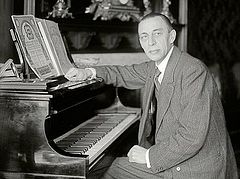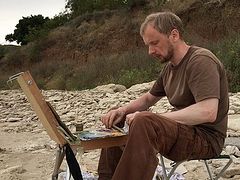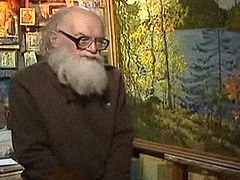We often reject ballet as an a priori a sinful form of art, judging it only from hearsay or scandalous stories and personalities. Meanwhile, we know of many religious ballet dancers. Anna Pavlova, Igor Moiseyev, Andris and Ilze Liepa, Svetlana Zakharova, Ulyana Lopatkina—to name but a few.
Ballet is a complex and ambiguous phenomenon. Meanwhile, dance in and of itself, is more neutral than sinful. It all depends on what one or another production carries, what the choreographer conceives, what the dancer puts into it, even down to the costumes, music and scenery he or she dances in.
His Holiness Patriarch Kirill spoke about this at one of his meetings with the public:
“All that does not provoke lust, that does not destroy the human personality, but, on the contrary, elevates it and works to harmonize the world and man—all of this is included in God’s plan for the salvation of sinful and fallen man… And in this sense, both opera and ballet—I mean classical ballet—deserve attention.”
It is known that the holy Tsar Nicholas II and Tsarina Alexandra Feodorovna loved to go to the theater. The Emperor liked opera more than ballet, but there is quite a lot of information in his diaries about him visiting ballet performances. The Emperor appreciated Tchaikovsky’s music, spoke highly of the ballets, Sleeping Beauty and the Little Humpbacked Horse. In 1913, St. Nicholas II and his daughters watched the ballet, Pharaoh’s Daughter, in which Anna Pavlova (1881–1931) “danced wonderfully.”
Metropolitan Anthony of Sourozh wrote in his works:
“Dance is perfect, complete, contemplative silence, and this experience of communion with God in the depths of stillness is expressed in movement, in full harmony, in perfect beauty.”
Dance as an experience of communion with God… It sounds rather bold. Is it really possible in any way?
The history of Russian ballet began in the mid-eighteenth century. In as early as 1806, the house church dedicated to the Holy Trinity at the Imperial Drama School (now the Vaganova Academy of Russian Ballet) opened. While he approved of the idea, Emperor Alexander I said: “Dancing is dancing; but one’s faith in God should not be shaken by it.”
“The religious foundation laid in the school remained with all the ballet dancers forever,” Victor d’Andre, Anna Pavlova’s husband, wrote in his book. “Many years after leaving school, the dancers—and many even after their service—continued to attend the theater church.”
Anna Pavlova, who often went to the theater church, together with the dancers of her company made a carpet for the church services as a gift. “Ballet is not about technique—it is about the soul,” the great Russian ballerina used to say. Having no children of her own, Pavlova opened an orphanage for Russian orphans in Paris.
The choreographer Michel Fokine (1880–1942), who was also good at painting, presented the school with an icon, “Christ the Savior, Not-Made-by-Hands”, he had painted himself. It was blessed and hung in the holy corner of the students’ dormitory.
The Russian-born American choreographer of Georgian origin, George Balanchine (1904–1983), as a child helped in the altar of the Drama School church. His relative wrote that “he was a very religious person. During his stays in Georgia he would always visit our churches.” This is what he would say about his faith:
“The words of the Gospel are rooted in all of us… Faith is not verified. …You cannot jump into the faith as you jump into a swimming pool. You need to enter it little by little as you would enter an ocean.”
The Russian ballerina Olga Spessivtseva (1895–1991) was a very religious person as well. Lonely in emigration, living out her days in a mental institution, she would often attend church services—only in the Orthodox Church did her melancholy abate. She loved Pascha very much. Spessivtseva miraculously overcame her illness and passed away at the age of ninety-six, reconciled with God and in her right mind.
This continuity was not interrupted even in the Soviet era. Igor Moiseyev (1906–2007), the founder of the State Academic Folk Dance Ensemble, recalled that he had been pressured to join the communist party as many as eighteen times. But he always refused for reasons of principle.
“Why don’t you want to join the Party?”
“Because I believe in God and don’t want to be tongue-lashed by you at your meetings.”
“We learned ballet… in church,” the soviet ballerina Alla Osipenko (b. 1932) recalls her studies during the Second World War. Baptized in 1937, she does not conceal her faith and says:
“God gave me talent, God gave me a family, and God gave me my wonderful [dance] partners.”
Aggripina Vaganova (1879–1951), who devised classical ballet technique and training system, spoke about modesty and did not recommend having an attitude higher than ninety degrees (in simple terms: “Do not raise your legs above your head”).
“Posture leads to a manner—very strict, without excess. The purity of a naked body requires this. A person turns into a living sculpture,” Nadezhda Bazarova (1904–1993), a pupil of Vaganova, wrote in her Alphabet of Classical Dance.
She was echoed by a critic who noted “a special, captivating modesty of gesture” in the legendary Galina Ulanova (1910–1998). Her whole image was “imbued with spiritual nobility and high moral purity.”
An elderly bishop who had seen Ulanova on stage as a young man told me that her entire dance was… spiritual. When I asked him, “Vladyka, do you think she believed in God?” he replied, “I think she did.”
“Do you believe in God?” Galina Sergeevna was once asked after perestroika. She answered: “God lives in me.” When she was a girl, her mother, also a ballerina, would take little Galina to the house church at the ballet school. Her nanny was also religious.
Ulanova’s last dance, after which the fifty-year-old ballerina left the stage, provoked feelings close to awe in Alexander Vertinsky1:
“I have never seen anything of this kind in my life! O Lord, what peaks and heights creativity can attain! It must be the Spirit of God!… How can one retain, preserve this miracle on earth? How can one pass on this gospel to posterity for future centuries, so that others can learn this supreme, divine art from her?”
The prominent ballerina was modest and merciful. Her friend, ballerina Tatiana Vecheslova (1910–1991), wrote in her memoirs that she had more than once seen Ulanova at the bedside of the sick. Any doctor and nurse could envy her endurance. The star who was applauded by the audience around the globe with remarkable calm and patience gave patients medicine, listened to their pulse and gave them hot-water bottles. She did everything unhurriedly, in a collected and businesslike manner.
The church at the Academy of Russian Ballet where both A. Pavlova and G. Ulanova used to pray was restored in 1998. According to the current church rector, Archpriest Andrei Zhuk, for today’s students, “dance is always filled with soul”. And the first commandment of a student, according to the 1887 Primary Rules for students hanging around in the study corridor, reads: “Start and finish your work with prayer.”
Ulyana Lopatkina (b. 1973), Diana Vishneva (b. 1976), Svetlana Zakharova (b. 1979), Ilze (b. 1963) and Andris (b. 1962) Liepa begin their performances with prayer and the sign of the cross.
“I am Orthodox,” D. Vishneva says. “At one time I went to church myself and was baptized. I believe in God.”
“I always keep in mind that I was baptized. As far back as the ballet school, while going on stage, I always bowed my head and turned to God internally,” recalls A. Liepa who himself integrated Church life with work and contributed to his sister’s conversion to God.
Their father, Maris Liepa2, collected Orthodox icons for many years—which could not but influence Ilze and Andris’ spiritual choice.
“The more work I have, the more often I need to pray. Work keeps me in good shape—spiritually, emotionally and physically. Besides, I understand that without prayer nothing can be achieved,” says Andris, who is a member of the Patriarchal Council for Culture.
Another member of this Council is Lyubov Rakhmanina, director of the Finnish National Ballet School in Helsinki.
“We are a religious people, we are closely related to God,” this ballerina is convinced. “I am sure that all people with creative professions, no matter how they express themselves, always ask God for help and support. Because you know that without help from above you will not succeed. You are always in touch with God; He is by your side.”
“There is only one step between an Olympic competitor and a monk,” I. Liepa cites the Holy Fathers. After she had started going to church, ballet became more than just work for her.
“Choreography is the only method of exercise that harmonizes the human soul. It’s not just grace and a physical activity—it’s training the body in the law of harmony. And it has an incredible effect on the soul.”
U. Lopatkina, who was baptized at the age of sixteen on her own initiative, also speaks of the asceticism of ballet:
“Classical ballet has now become a sublime art. I have chosen this position: What I have to do, I will do as best I can, with the full dedication of all my strength, and, if possible, not just of high quality and interestingly, but also spiritually.”
***
Dance is a complex and ambiguous phenomenon in our life. Perhaps it is similar to the concept of “the Russian soul.” But it is precisely to the mysterious Russian soul that Russian ballet owes its worldwide recognition. It is a soul that yearns for the heavenly, seeks it, and in its search gives us the opportunity to touch beauty. And beauty is known to be one of the Names of God.
1 Alexander Nikolaevich Vertinsky (1889—1957) was a renowned and very influential Russian composer, poet, singer, songwriter, actor and artist. When Vertinsky died Ulanova was only forty-seven, so he must have watched her performances before she left the stage.—Trans.
2 Maris Eduardovich Liepa (1936—1989) was a famous Latvian-born Soviet ballet dancer who performed with the Bolshoy Ballet for over twenty years.—Trans.





"Everything heavenly, holy, bearing the stamp of Christianity, is foreign to the theatre; and if it does sometimes appear on the stage, then it is made the subject of ridicule. The very name of God, terrible to every creature, is only pronounced there heedlessly, with derision and scoffingly; the sacred calling — for instance, the monastic calling, the angelic calling — is turned into ridicule; the respect for authorities, for parents, and the clergy is prejudiced when any reprehensible actions of such persons are publicly turned into ridicule, and this before the whole of society, before thoughtless young people, even before children, to whom the names of their parents and superiors ought to be sacred. One disrespectful or unbecoming word concerning their elders is sometimes sufficient to prejudice the respect due to them. Have Christians become so thoughtless that they can find no better means of spending their precious time than in the theatres, for which they leave even the God's temple, the Divine Service? And the precious festival time, given by God for instruction in the Holy Scriptures, in salutary reflections, and in virtuous actions, they fritter away in laughter and stupid applause in the theatres. No; say what you like, theatres are an ungodly institution. Only penetrate into their spirit and you will agree that they are schools of incredulity, mockery, of the insolent ridicule of everything, and that they are depravity. Woe unto that society in which there are many theatres, and which loves to frequent them! Occasionally, it is true, the theatre is the lesser evil for those who love evil. Lend an ear to popular opinion, to the opinion of those who have visited the theatre many times; they do not hesitate to say that theatres lead to depravity. Only the blind, "In whom the god of this world hath blinded the minds of them which believe not,"[811] say that a theatre is moral. No; Christians ought to perseveringly study their religion; they ought to read the Gospel more frequently, to study the Divine Service, to fulfil the commandments and the rules of the Church; to read the writings of the Holy Fathers, religious publications, in order to become imbued with the spirit of Christianity, and to live in a Christian manner. Such should be your occupations and recreations."
(St. John of Kronstadt)